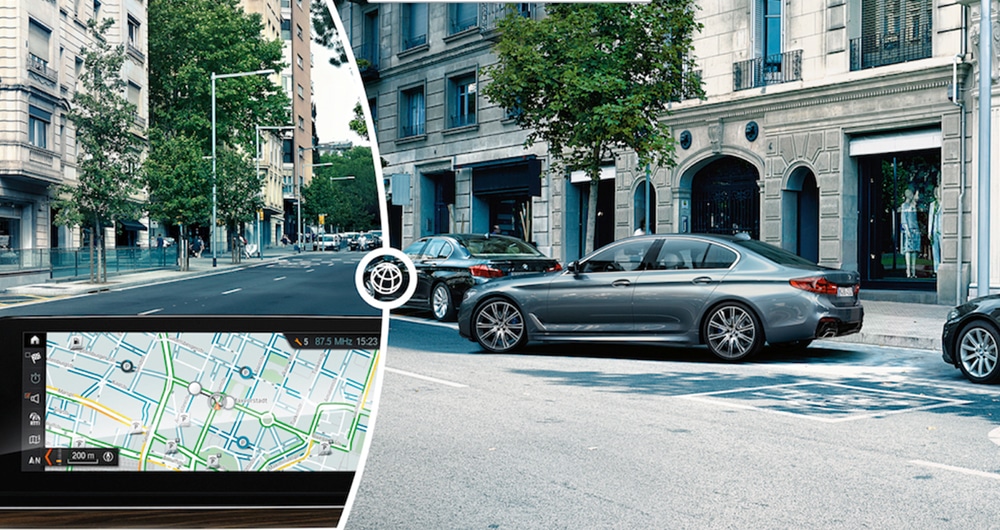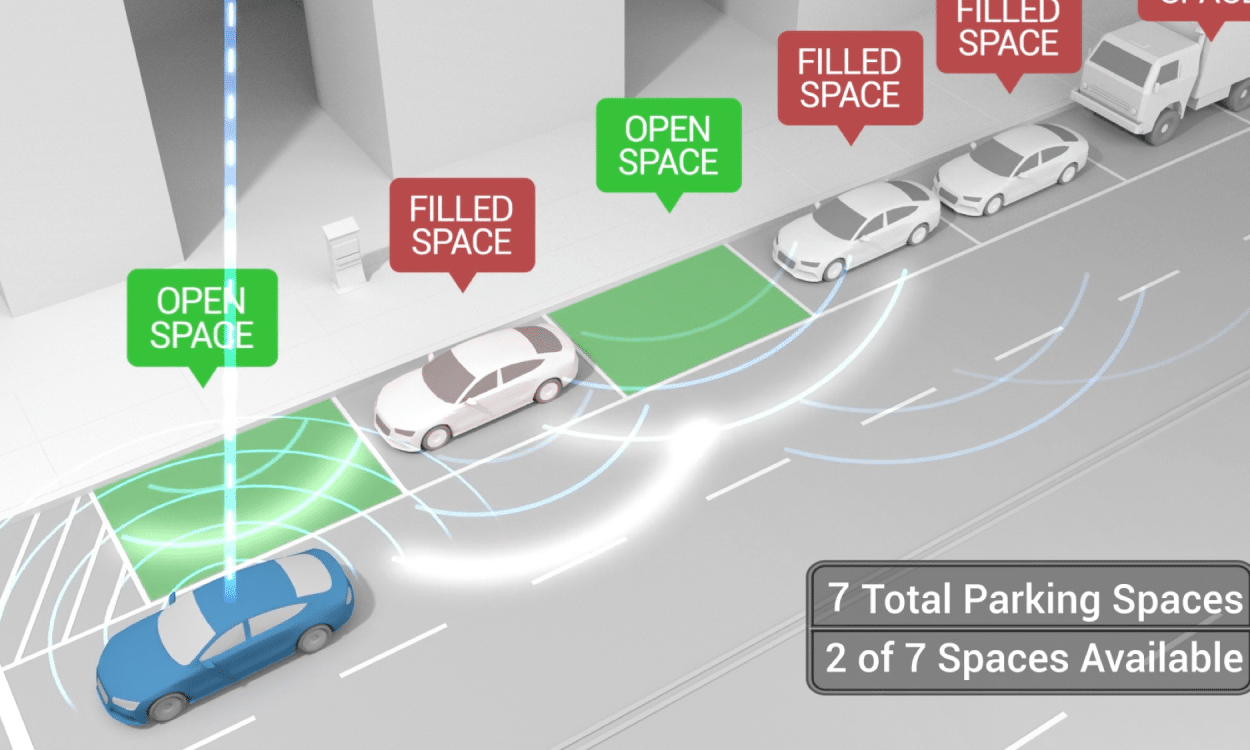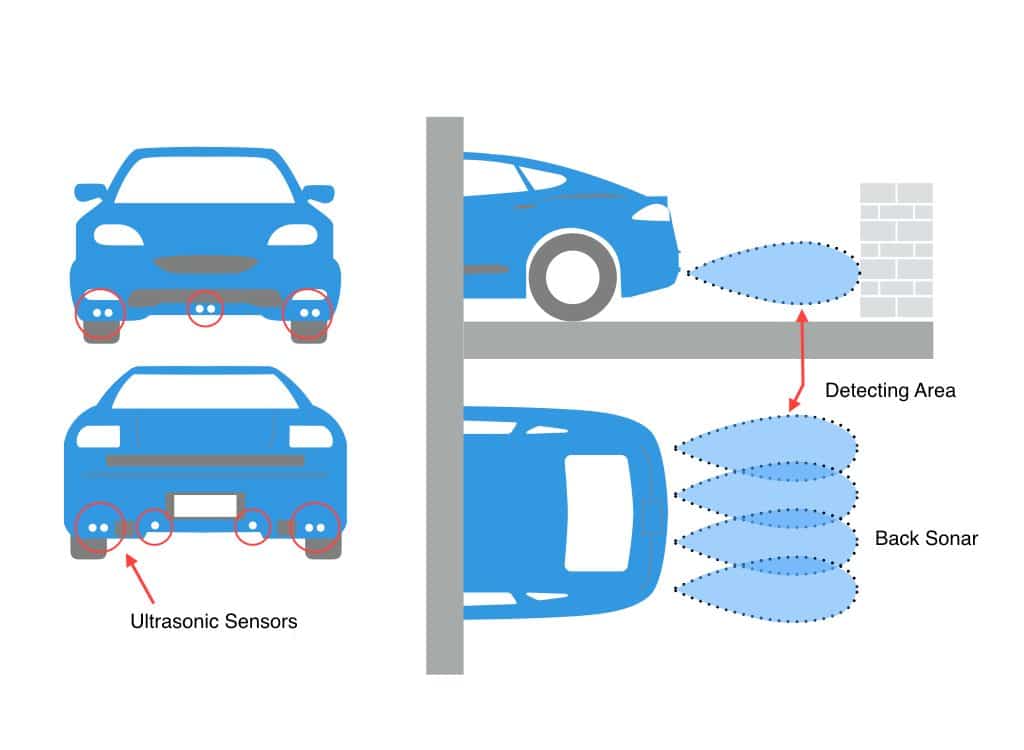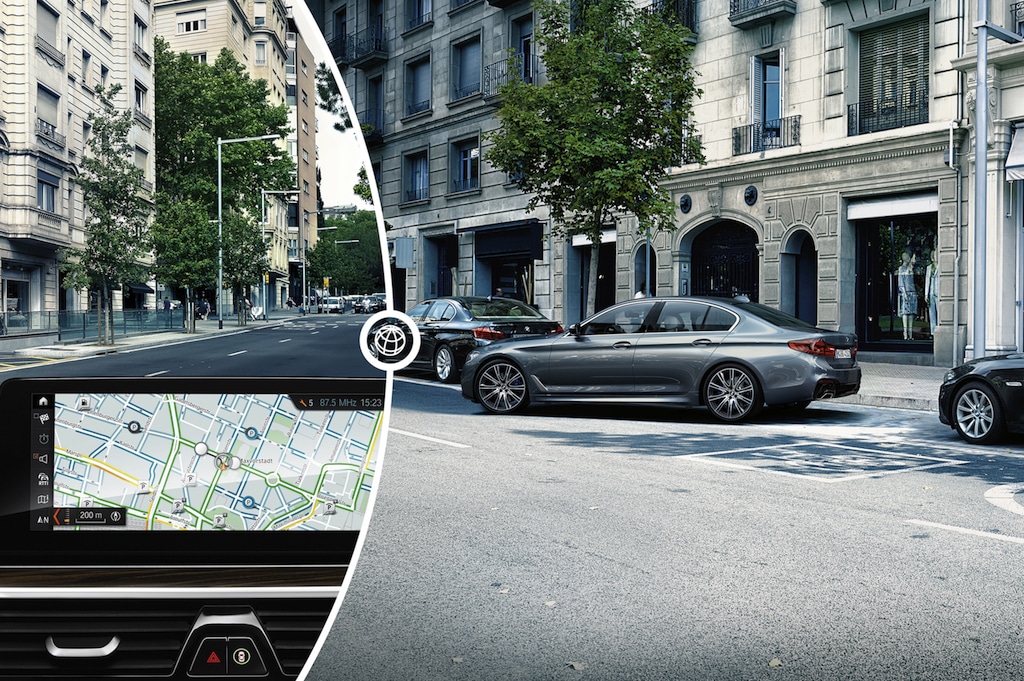
Our dedication to quality and innovation led us to develop a new technology that makes our industry-leading On-Street Parking solution even more accurate.
Today, INRIX introduced the first technology that leverages ultrasonic sensors (USS) in vehicles to capture real-time parking occupancy information that will also enhance the quality of INRIX Parking.
What are Ultrasonic Sensors?
Ultrasonic sensors, commonly referred to as “parking sensors,” have been used in cars for years to help drivers avoid bumping into objects when parking. These sensors project sound waves to detect the proximity of objects and alert drivers when they are getting too close.
Tapping Into The Automotive Internet Of Things
While most drivers rely on these sensors to parallel park, INRIX has developed a new technology that uses USS to scan, collect, and transmit real-time parking occupancy information to the cloud and ultimately help guide drivers to available parking.

Here’s how it works:
As a car moves down a street, ultrasonic sensors transmit sound waves and collect data on parked cars and empty spaces. This data is then sent anonymously to the INRIX Parking Cloud to be analyzed and combined with our existing parking availability prediction engine to determine block-by-block occupancy levels.
USS data will initially be used to enhance INRIX Parking, but it’s only the tip of the iceberg. Vehicles can generate more than 25 GB of extended floating car data (xFCD) an hour as they move down the road. INRIX has been a leader in developing new technologies and applications to leverage this wealth of information. Our first implementation of using xFCD to improve the driving experience was INRIX Traffic, which collects anonymous GPS probe data from connected vehicles. Other examples include INRIX Incidents, Dangerous Slowdowns and Road Weather.
Our Best-In-Class On-Street Product Is Now More Accurate Than Ever
Finding on-street parking traditionally involves circling the block several times while hoping a space opens up. Drivers searching for parking waste more than 17 hours per year, resulting in $375 in wasted time, fuel, and emissions. Cities, as you can imagine, are also impacted by the increased traffic (30% of congestion is a result of drivers circling the block for parking) and CO2 emissions caused by uninformed drivers.
This issue isn’t caused by a lack of available parking spots, but rather by a lack of information about where open parking spots are located. Luckily, INRIX Parking can help.
INRIX Parking provides a complete solution for drivers, helping them to easily find, compare, pay, and navigate to the best parking spot. One of the most innovative features of INRIX Parking is our Parking Availability Engine, which forecasts occupancy levels for street and lot parking spots. Knowing where parking exists is helpful, but knowing exactly where open parking spots are located is priceless.
Enhancing INRIX On-Street Parking
In 2016, INRIX launched the industry’s first real-time on-street parking service with BMW. This solution relies on data from 300+ million connected cars and devices, machine learning, and predictive analytics to deliver the most accurate parking availability predictions available on the market. The addition of USS data to our street parking product will enhance the quality, improve accuracy, and expand coverage to additional blocks and cities.
2018 and Beyond…
Other parking data sources can be unreliable and are expensive to maintain but by pulling real-time information spot by spot from cars, INRIX is able to improve accuracy and provide a scalable parking solution for automakers and cities. There are numerous other types of technologies that can add value to our products just like USS. Stay tuned for more exciting announcements and product updates from INRIX Parking in 2018.







